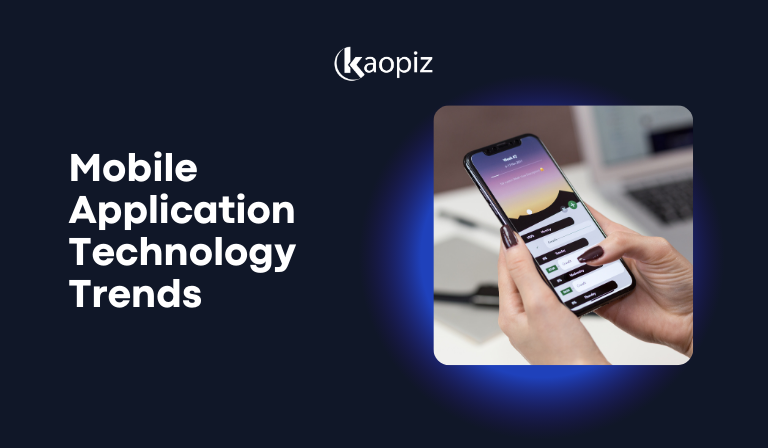Offshore Development Center (ODC): What It Is & How to Set Up in 2025
Offshore Development Centers (ODCs) have emerged as a strategic solution for startups and small to mid-sized businesses (SMBs) aiming to reduce costs and access global talent. By establishing an ODC in a cost-effective location, companies can build dedicated software development teams that deliver high-quality results—without the overhead of hiring locally.
In this blog, we break down the Offshore Development Center meaning, different models, highlight the key benefits and challenges, and share best practices for setting it up—so you can decide if it’s the right fit for your business. Let’s dive in!
Table of Contents
- What is an Offshore Development Center?
- ODC vs Outsourcing: What’s the Difference?
- 4 Types of Offshore Development Center Models
- Top 6 Offshore Development Center Benefits
- Challenges of Working with an Offshore Development Center
- Offshore Development Center Checklist
- How to Set Up and Manage an Offshore Development Center
- Why Choose Kaopiz as Your Offshore Development Partner?
- Conclusion
- FAQs
What is an Offshore Development Center?
An Offshore Development Center is a dedicated, remote team of integrated talents that provides software development services from a foreign country. Simply put, it functions as a subsidiary or extension of your main company, operating in a location where the cost of living—and therefore operational costs—are significantly lower than in your home country.

Unlike traditional outsourcing models, an ODC is built for long-term collaboration and close integration with your internal teams. It’s not limited to just developers and testers. A typical ODC also includes essential roles such as project managers, business analysts, UI/UX designers, DevOps engineers, HR support, and account managers—all tailored to your business needs.
Moreover, most ODCs are equipped with modern infrastructure and secure development environments, reducing the need for investment in physical office space, hardware, or IT systems. This makes setting up an ODC a cost-effective and scalable solution for startups and enterprises looking to expand their engineering capacity while maintaining control over product development and quality.
ODC vs Outsourcing: What’s the Difference?
While both Offshore Development Centers and outsourcing involve delegating software development tasks to external teams, the two models differ significantly in terms of structure, control, and long-term value.
| Aspect | Offshore Development Center | Outsourcing |
|---|---|---|
| Ownership & Control | Full control over team structure, tasks, and IP | Limited control; vendor manages project delivery |
| Duration | Long-term collaboration | Typically short-term or project-based |
| Team Integration | Fully integrated with your processes and tools | Operates independently, less alignment with internal teams |
| Scalability | Highly scalable and flexible | Scalability depends on vendor capacity |
| Cost Efficiency | More cost-effective over time for continuous development | Cost-effective for small, fixed-scope projects |
| Best Use Case | Product development, long-term tech capacity building | One-time projects, quick MVPs, or urgent tasks |
When to Choose ODC vs. Outsourcing:
4 Types of Offshore Development Center Models
There’s no one-size-fits-all approach when it comes to offshore development. Depending on your goals, budget, and timeline, you can choose from several ODC models—each offering different levels of control, flexibility, and scalability.
Dedicated Team Model
The dedicated team model assigns an offshore team exclusively to your projects, functioning as a seamless extension of your in-house development team.
This approach is ideal for long-term engagements or when specialized skills are needed but not readily available internally. The offshore team works closely with your internal staff, following your tools, processes, and project goals.
| Pros | Cons |
|---|---|
| Full control over resources and priorities | Requires more direct management from the client |
| Strong commitment and alignment with your business goals | Less flexibility for short-term or rapidly changing needs |
| Smoother collaboration and knowledge retention |
Build-Operate-Transfer (BOT)
The Build-Operate-Transfer model is a strategic approach where a service provider sets up and manages an offshore development center on behalf of the client, with the intention of transferring full ownership after a predefined period.
It consists of three phases:
- Build: The provider establishes the offshore team, infrastructure, and processes.
- Operate: The team is managed by the provider while delivering services to the client.
- Transfer: After a successful operation period, the entire setup, team, assets, and operations are transferred to the client.
This model is ideal for companies that eventually want to own their offshore operations but prefer to reduce initial risks and set-up efforts.
| Pros | Cons |
|---|---|
| Low-risk entry into offshore development | Longer time before full control is achieved |
| Smooth transition to full ownership | Requires legal and operational readiness for the transfer phase |
| Opportunity to validate the model before committing long-term |
Project-Based Model
The project-based ODC model, also known as the “fixed price” or “time and material” model, involves engaging an offshore development center for a specific project or task with a predetermined budget, scope, and timeline. This model is best suited for short-term projects with clearly defined requirements, deliverables, and outcomes.
In this setup, the offshore partner takes full responsibility for resource management and project execution, delivering results according to predefined milestones. Therefore, it is ideal for MVP development, website launches, mobile apps, or feature-specific tasks where the scope is fixed.
| Pros | Cons |
|---|---|
| Clearly defined scope and deliverables | Limited flexibility for changes once the project starts |
| Predictable costs and budget control | Risk of compromised quality if the offshore team lacks domain expertise |
| Minimal involvement required from the client | May not be ideal for evolving or long-term product development |
Hybrid Model
The hybrid model combines the strengths of both the dedicated team and project-based models, offering a flexible and scalable approach to offshore collaboration. In this setup, a core team is assigned to long-term initiatives, ensuring stability and deep product knowledge, while additional specialists can be brought in for short-term tasks or specific deliverables as needed.
This model allows businesses to scale resources dynamically based on evolving project requirements, timelines, or business priorities, making it ideal for companies with fluctuating workloads or multiple concurrent projects.
| Pros | Cons |
|---|---|
| High flexibility to adapt to changing needs | Requires more oversight and coordination |
| Optimized resource utilization | Possible communication gaps between long-term and short-term teams |
| Cost-effective for organizations managing diverse projects | May increase complexity in project and team management |
Top 6 Offshore Development Center Benefits
Establishing an ODC offers a wide range of strategic and operational advantages for businesses aiming to scale efficiently and stay competitive in a rapidly evolving market. Here are the key benefits of ODC:
Cost Savings
One of the most significant advantages of an ODC is its potential for substantial cost savings. Since the offshore center already has its own infrastructure, equipment, and a team of experienced specialists, your company avoids the high upfront costs associated with setting up a local development center.
According to a report by Accelerance, businesses can save between 39% and 72% in offshore development costs by hiring teams from locations like Vietnam, India, and Eastern Europe, compared to building an in-house team in high-cost regions like Seattle, Washington.
Enhanced Risk Mitigation and Security
Compared to traditional outsourcing, an ODC offers greater control over security and risk management. With a dedicated team operating under your guidance, you can implement specific protocols tailored to your business needs—from data protection and regulatory compliance to physical infrastructure security and business continuity planning.

An ODC allows you to enforce your network security standards, restrict access, and establish on-site controls—all while aligning with local and international regulations. This level of customization is ideal for companies in highly regulated industries such as finance, healthcare, or government services.
However, if a particular offshore location cannot meet your security or compliance requirements, then an ODC—despite its cost benefits—may not be the right fit. Security should never be compromised for savings.
Access to Skilled Offshore Developers
An ODC gives you access to highly skilled and experienced IT professionals who are trained to deliver top-tier solutions. Leading ODC providers invest in continuous upskilling to ensure their teams stay competitive and up to date with the latest technologies.
For example, at Kaopiz – a trusted IT outsourcing company, our teams receive weekly training in both technical and English communication skills, ensuring not only technical excellence but also smooth collaboration with international clients.
According to Deloitte, 50% of businesses struggle to find developers with the right skills. Offshoring eliminates geographic limitations, opening a broader talent pool and accelerating the recruitment process.
Scalability & Flexibility
One of the core advantages of an ODC is the ability to scale your team quickly and efficiently based on project needs. Whether you’re expanding for a product launch or downsizing after delivery, an ODC allows you to adjust resources without the long lead times or overhead of traditional hiring.

This flexibility also supports multi-phase development, allowing you to onboard specialists as needed, such as DevOps engineers, UI/UX designers, or QA testers, without permanent commitments. As your business evolves, your ODC can evolve with you.
Full Control Over Operations
An ODC gives you direct oversight and control of your project execution, unlike traditional outsourcing, where much of the decision-making is handled by the vendor. With an ODC, you interface directly with team members, set priorities, define workflows, and enforce your own quality and compliance standards.
In a customer-owned ODC, you have full autonomy over team structure, tools, communication practices, and development processes, tailored entirely to your business needs.
Even in a vendor-owned model, many ODCs are designed to give you significant influence while the provider manages infrastructure and administration. This balance ensures your project stays aligned with your goals, timelines, and expectations.
On-Time Project Delivery
Offshore Development Centers are structured for efficient execution and timely delivery. With dedicated teams working under clearly defined timelines and close coordination with your main office, ODCs are able to stick to project schedules from start to finish.

Strong collaboration between the offshore and in-house teams helps streamline workflows, reduce bottlenecks, and speed up development cycles, ensuring that projects are delivered on time without compromising on quality.
Challenges of Working with an Offshore Development Center
While ODCs offer numerous benefits, they also come with specific challenges that businesses must be prepared to address. Understanding these obstacles early on can help you set realistic expectations and build mitigation strategies to ensure successful offshore collaboration.
Here are some challenges of ODC and solutions to overcome them:
| Challenge | Solution |
|---|---|
| Language differences can lead to misunderstandings and delays. | Use a bilingual team, establish clear communication protocols. |
| Coordination can be difficult when teams operate in different time zones. | Plan overlapping hours and use async communication. |
| Maintaining consistent code quality and testing across geographies can be challenging. | Set coding standards, use CI/CD, and monitor performance. |
| Offshore teams may introduce data security or regulatory risks. | Enforce security policies and ensure regulatory compliance (e.g., GDPR). |
| Offshore teams need time to learn workflows, which may impact early productivity. | Prepare onboarding materials and involve the ODC early. |
Offshore Development Center Checklist
Setting up a successful ODC requires careful planning and alignment with your business goals. Here’s a practical checklist to help you evaluate and prepare for launching your ODC:
Skills and Quality
Start by identifying the country that offers the best talent and service quality within your budget. While India and China are well-established IT outsourcing hubs, Vietnam is emerging as a top-tier destination due to its growing pool of skilled developers, strong technical education system, and familiarity with the latest technologies.
Conduct a detailed vendor assessment to evaluate:
Working Profile and Experience
Choose a partner with a proven track record. Look into the company’s history, portfolio, and client testimonials. Speaking directly with past or current clients can give you valuable insight into their delivery capabilities, transparency, and reliability.

Key things to look for:
- Years of experience in offshore development
- Industries served and technology focus
- Long-term client relationships
- Data security and confidentiality practices
Communication and Language Proficiency
Effective communication is crucial for successful offshore collaboration. Choose a vendor in a region where English proficiency is strong and where the team has experience working with international clients.
For example, Vietnamese software developers are known for their clear communication skills and responsiveness, which significantly reduces the risk of misunderstandings and project delays.
Evaluate:
How to Set Up and Manage an Offshore Development Center
Establishing an ODC is a strategic move that requires careful planning, the right partner, and ongoing management to ensure long-term success.
Below is a step-by-step guide to help you on how to set up an offshore development center effectively.
Step 1: Define Objectives & Scope
Before establishing an ODC, it’s crucial to define your business goals and the scope of work. This will help ensure that your ODC is aligned with your long-term strategy and structured to deliver maximum value.
Start by asking:

Once objectives are clear, outline the services and functions you expect your ODC to support. Comprehensive Offshore Development Center services typically provide the following:
Step 2: Choose the Right Location
Selecting the right location for your ODC is a strategic decision that impacts cost, talent quality, efficiency, and long-term success. Here are key factors to consider:
Moreover, reports like the Global Services Locations Index (GSLI) provide valuable insights into countries that offer a strong balance of cost efficiency and service quality for offshore development. Vietnam, for example, is gaining global attention for its cost-effectiveness, robust tech talent, and growing reputation as a trusted ODC hub.
Step 3: Select a Trusted Partner
Choosing the right ODC partner is crucial to the success of your offshore strategy. A reliable partner ensures smooth collaboration, transparent communication, and high-quality delivery.

Here’s what to look for:
Step 4: Team Setup & Onboarding
Once you’ve selected your ODC partner, the next step is to build the right team and onboard them effectively. A smooth onboarding process ensures your offshore team aligns with your company’s goals, tools, and culture from day one.
Key steps in this phase:
Step 5: Infrastructure and Tools Setup
To ensure seamless collaboration and high productivity, your ODC must be equipped with the right infrastructure and tools from day one.
- Development Environment: Set up secure access to code repositories, staging servers, and CI/CD pipelines.
- Communication Tools: Use platforms like Slack, Zoom, or Microsoft Teams for daily coordination.
- Project Management: Implement tools such as Jira, Trello, or Asana to track tasks, timelines, and progress.
- Security & Access Control: Ensure VPNs, role-based access, and data protection protocols are in place.
Step 6: Performance Monitoring and Scaling
Once your ODC is up and running, continuous monitoring is essential to ensure high performance and long-term success.
Why Choose Kaopiz as Your Offshore Development Partner?
With a proven track record in delivering high-quality offshore development services, Kaopiz is a trusted technology partner for businesses worldwide. Based in Vietnam, we combine technical excellence, cost efficiency, and cultural compatibility to help you build and scale your ODC with confidence.
Why Vietnam is an Ideal Destination for ODCs
Vietnam has rapidly emerged as one of the top destinations for establishing an Offshore Software Development Center, offering a powerful mix of cost efficiency, skilled talent, and government incentives.

- Cost-Effective Talent Pool
Vietnam offers access to highly skilled IT professionals at a much lower cost. The average salary for software engineers ranges from $10,000 to $30,000 per year, significantly lower than in the U.S. or EU. Compared to India and the Philippines, Vietnam delivers comparable technical quality with better cost stability and lower attrition rates.
- Abundant, Skilled Workforce
As of the end of 2024, Vietnam has nearly 74,000 digital technology enterprises, marking a 10.1% increase year-over-year, and employs nearly 1.26 million workers in the ICT sector. Each year, over 62,000 IT graduates enter the workforce from 148 universities and 412 vocational colleges. Moreover, Vietnamese developers rank among the top globally—#2 in Asia-Pacific (Global Skills Index), and top 10 in various international programming competitions.
- Strong Government Support
Vietnam’s government actively promotes IT growth through tax incentives, investment in tech parks, and business-friendly policies. Special Economic Zones (SEZs) and a streamlined registration process make it easy for foreign companies to establish long-term offshore operations.
Why Kaopiz Is Among the Best Offshore Development Center Providers in Vietnam
With over 10 years of experience in the IT outsourcing industry, Kaopiz is a trusted partner for global businesses seeking high-quality offshore development services. Backed by a team of 300+ skilled engineers, we have successfully delivered 500+ software projects across industries for leading clients such as Sony, Toyota, Ministop, Daiso, and more.

Kaopiz offers a full suite of offshore development center services—from team setup and onboarding to project management, QA, DevOps, and long-term maintenance. Our flexible engagement models and bilingual BrSEs ensure smooth collaboration and alignment with client goals.
Our commitment to quality, transparency, and long-term partnership is reflected in our 98% client satisfaction rate, making Kaopiz one of the most reliable ODC providers in Vietnam.
Conclusion
Setting up an Offshore Development Center is a strategic move for companies looking to scale efficiently, access top global talent, and reduce development costs, without compromising on quality. From clear cost advantages and abundant IT talent to government support and strong infrastructure, Vietnam has emerged as a leading destination for offshore development.
Partnering with the right ODC provider makes all the difference. If you’re ready to unlock the full potential of offshore development, Kaopiz is here to be your trusted partner in Vietnam.
FAQs
How Long Does It Take to Set up an ODC?
The setup timeline for an ODC depends on project complexity, location, and talent availability. On average, it takes 2 to 8 weeks to establish infrastructure and onboard the right team. Once operational, your ODC can rapidly scale to meet development demands.
How Do I Find a Reliable Offshore Development Center Company in Vietnam?
Look for Offshore Development Center companies with proven experience, a strong client portfolio, and positive testimonials. Check for technical capabilities, certifications, language proficiency, and transparent communication practices. Providers like Kaopiz, with 10+ years in the market and 500+ successful projects, are a reliable choice.
How Much Will I Save by Setting up a Dedicated Offshore Development Center Team?
By establishing a dedicated Offshore Development Center in Vietnam, you can save up to 60–70% in development costs compared to hiring locally in countries like the U.S., Japan, or Europe. These savings come from lower labor costs, infrastructure expenses, and favorable tax policies.




















